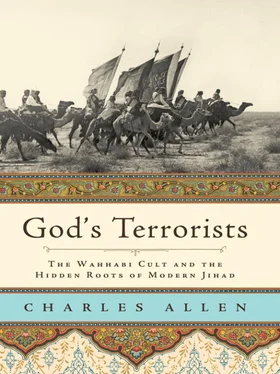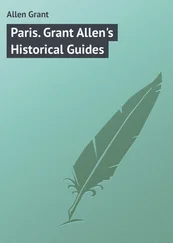The south-eastern corner of the Mahabun Mountain, occupied by the Utmanzai, is the point where the Indus finally cuts through the mountains to debouch on to the plains. In the late 1960s the Government of Pakistan built the Tarbela Dam here, whose waters now extend northwards up the gorge for some miles. The road crosses the Indus just below the dam. At this point, according to Bashir Khan’s notes, I was to be aware that on the left side of the gorge looking up it – that is to say, on the eastern slopes of the Mahabun Mountain, and now all but submerged under the waters of the Tarbela Lake – was Sittana, which Bashir Khan described simply as ‘the site of the camp of the Hindustani Fanatics’.
The term ‘Hindustani Fanatics’ meant absolutely nothing to me then. But it should have rung bells, because I was already aware from my researches that, before raising the Corps of Guides, Harry Lumsden had at the age of twenty-four led a force of three thousand Sikh infantry into northern Hazara, then nominally under Sikh control. He had faced stiff opposition from the local tribesmen, the Sayyeds of the Khagan Valley, whose resistance had been greatly strengthened by the presence of a small group of Hindustanis – not Hindus, as the word might suggest, but Muslims from Hindustan, the lands east of the Indus River. These Hindustanis, he noted in his report, had led the Sayyeds into battle and they had fought the fiercest. Several were taken prisoner and sent down under guard to Lahore, capital of the Punjab, where Harry Lumsden’s chief, Henry Lawrence, made them welcome and praised them for their courage. Nearly all were found to be plainsmen from Patna, a large town on the Ganges between Benares and Calcutta, and they were led by two brothers named Ali, also from Patna: ‘They begged for mercy and were permitted, under promise of future good conduct, to go to their homes in India.’
And there were other clues I had missed – one of them set down in a fascinating document written by that delightful eccentric James Abbott, the first British administrator of Hazara, giving pen-portraits of all the tribal chiefs in the area with details of their dispositions and foibles. Abbott had attached a number of notes and postscripts, and one of these read, in part: ‘Khagan is important partly on account of its contact with independent states – but more, owing to the disposition of the Hindustanee fanatics , followers of Achmed Shah, to make it their place of arms… I understand that there are still some of the Hindustanees fostered there by Syud Zamin Shah, & that intercourse is maintained between the Syuds & the fanatics at Sittana.’
Tucked away among Abbott’s numerous letters to Henry Lawrence in Lahore were further references to this same ‘remarkable nest of Immigrants from Hindustan’ that I had earlier failed to note. Abbott had become convinced that some sort of secret supply chain had been set up, by which money, materials and men were being smuggled across the plains of India to Sittana. His men had intercepted messengers carrying letters concealed inside bamboo canes and with gold coins hidden under their waistcoats. Young Muslim men from Tonk, Rohilkhand and elsewhere in India were crossing the Indus River at Attock ‘disguised as beggars and students’ and then making their way north to the Mahabun Mountain, where they discarded their disguises and took up arms. At Sittana itself, large godowns (warehouses) were being built for the storage of grain, transported there by kafila (camel caravans). Over a period of four years, between 1849 and 1853, Abbott had become increasingly concerned by the growing threat these ‘enthusiasts’ posed to his neighbouring district of Hazara, and had asked for armed check-posts to be set up along the Indus. He had been told that there were no grounds for alarm, for ‘all the enemies of the British Government have recently been defeated’.
Finally, there was the overlooked detail in the seditious letters intercepted by the authorities at Peshawar at the time of the outbreak of the Sepoy Mutiny of 1857, the so-called Indian Mutiny. As described in the Punjab Gazetteer of the Peshawar Division , these letters had been sent by ‘Muhammadan bigots in Patna and Thanesar to soldiers of the 64th Native Infantry, revelling in the atrocities that had been committed in Hindustan on the men, women and children of the “Nazareenes” [Christians] and sending them messages from their own mothers that they should emulate these deeds, and if they fell in the attempt they would at least go to heaven, and their deaths in such a case would be pleasant news at home. These letters alluded to a long series of correspondences that had been going on, through the 64th Native Infantry, with the fanatics in Swat and Sitana.’
The fruit of my travels and researches was Soldier Sahibs: The Men Who Made the North-West Frontier , published in 2000. It told the story of a pioneering band of political officers, known collectively as ‘Henry Lawrence’s Young Men’, young military officers who served under Lawrence on what was then the north-west frontier of the Punjab but which became the North-West Frontier Province of British India. Besides Harry Lumsden and James Abbott, these frontiersmen included Herbert Edwardes, John Nicholson, Reynell Taylor and Neville Chamberlain, all of whom carved out extraordinary reputations for themselves in their dealings with the frontier tribes – and who between themselves and the Pathans helped to create the lasting mystique of ‘the Frontier’. From then on India’s North-West Frontier became increasingly romanticised, as much by the political officers on the spot as by anyone else. I particularly recall the words of perhaps the last of these British frontiersmen, Sir Olaf Caroe, Governor of the North-West Frontier Province from 1946 to 1947, who described his feelings to me in the following terms:
The stage on which the Pathan lived out his life was at the same time magnificent and harsh – and the Pathan was like his background. Such a contrast was sometimes hard to bear, but perhaps it was this that put us in love with it.
There was among the Pathans something that called to the Englishman or the Scotsman – partly that the people looked you straight in the eye, that there was no equivocation and that you couldn’t browbeat them even if you wanted to. When we crossed the bridge at Attock we felt we’d come home.
Exactly the same attitude came into being in Britain’s dealings with the desert tribes of Arabia. Early adventurers such as Doughty, Burton and Palgrave and later politicals such as St John Philby and T. E. Lawrence unwittingly conspired to create a romance of a stark landscape sparsely populated by manly Badawin , better known today as Bedouin, whose harsh moral code mirrored that of the Pathans in almost every respect. It may be going too far to say that the tendency to view these two regions and their two peoples through rose-tinted preconceptions had fatal consequences, but it most certainly blurred the realities.
The first British officer to attach this aura of romance to the Pathans was Herbert Edwardes, in A Year on the Punjab Frontier , published in 1851. Yet Edwardes recognised that many of the qualities he admired in the Pathans were double-edged: their individualism and manliness was accompanied by intense egoism and vengefulness; strong clan identity meant intense inter-clan enmity; codes of friendship and hospitality were matched by deceit and betrayal. But perhaps the most striking paradox was that the Pathans’ much-vaunted independent nature was accompanied by an extraordinary degree of religious dependence. Edwardes was a devout Christian evangelical, brought up to regard his own values as the benchmark of modern civilisation, as demonstrated by the conspicuous success of the British Empire. He had no time for what he saw as the Pathans’ religious credulity, which in his opinion made them prey to exploitation by the many categories of persons known collectively as ulema, or ‘those learned in the ways of Islam’, the Muslim clergy. ‘The Moolah and the Kazee, the Peer and the Syud descended on the smiling vale,’ wrote Herbert Edwardes of the Waziri tribes south of Peshawar,
Читать дальше












